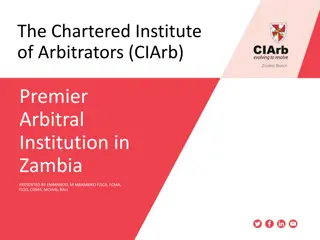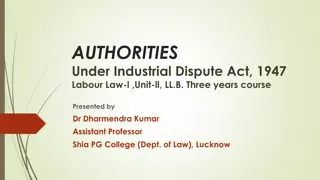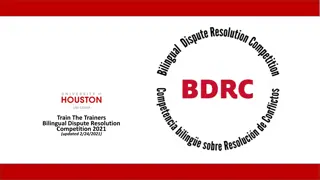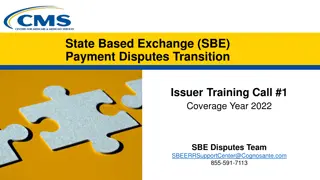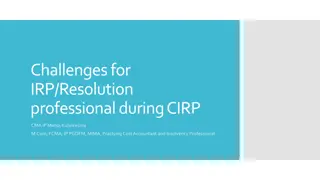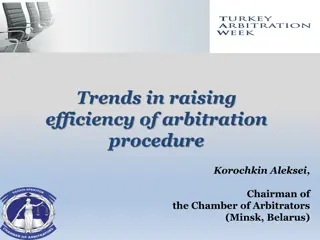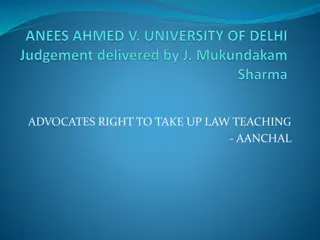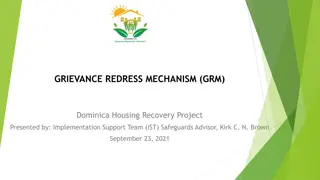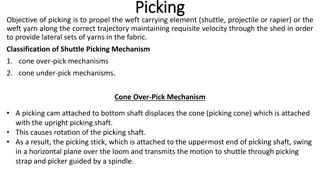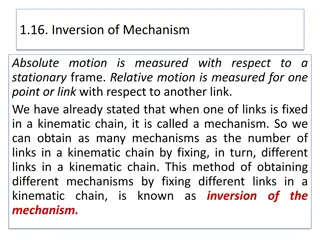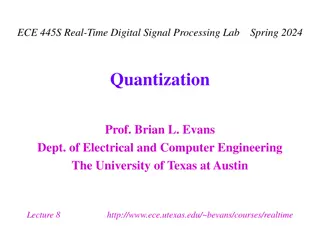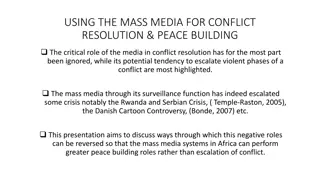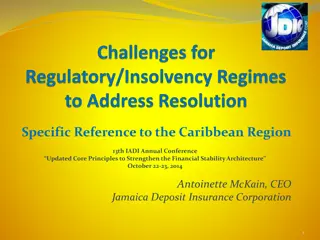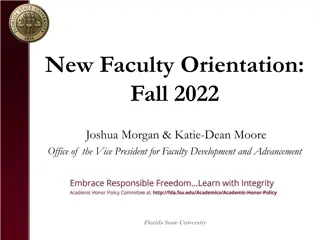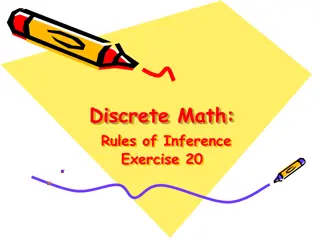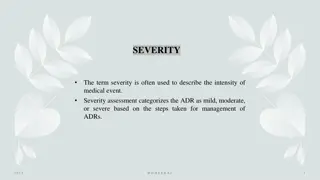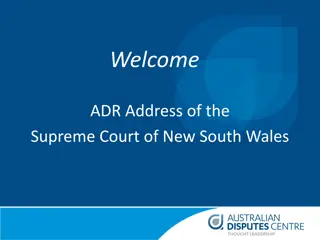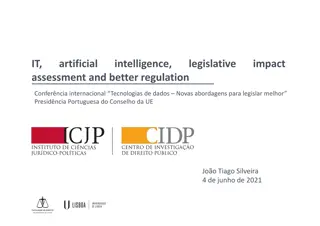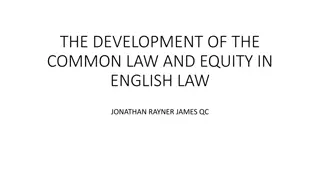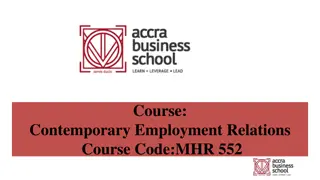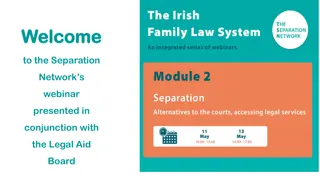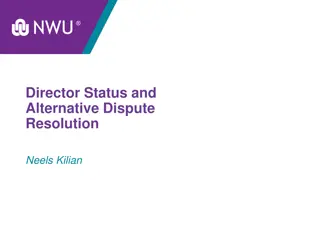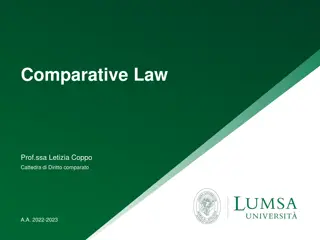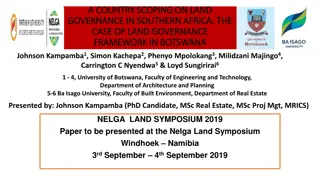Innovative Dispute Resolution Mechanisms: ADR in India
The concept of settling disputes through Alternative Dispute Resolution (ADR) in India introduces non-adversarial mechanisms for resolving legal suits between parties. ADR encompasses negotiation, mediation, arbitration, conciliation, and case evaluation, offering a more collaborative approach to conflict resolution. These methods aim to reach mutually beneficial solutions outside the traditional courtroom setting, promoting efficiency and fairness in dispute resolution.
Download Presentation

Please find below an Image/Link to download the presentation.
The content on the website is provided AS IS for your information and personal use only. It may not be sold, licensed, or shared on other websites without obtaining consent from the author. Download presentation by click this link. If you encounter any issues during the download, it is possible that the publisher has removed the file from their server.
E N D
Presentation Transcript
The concept of settling dispute through ADR has introduced a new mechanism of dispute resolution that is non adversarial in nature (to reach the best solution for everyone). A dispute is basically lis inter partes (legal suit between parties) and the justice system in India has recognised ADR as an alternative means to settle the dispute.
The term ADR is often used to describe a wide variety of dispute resolution mechanisms, that are in a way, an alternative to Court system. It includes: Settlement of disputes through negotiations where the parties in disputes are encouraged to negotiate rather than going for a lawsuit. Settlement of dispute through Arbitration where an arbitrator settled the disputes of parties and it is very much like a courtroom process.
ADR is generally classified into following categories: Negotiation Mediation Arbitration and Conciliation.
Case Evaluation It is a non binding process in which parties present the facts and the issues to a neutral case evaluator who advises the parties on the strengths and weaknesses of their respective positions, and assesses how the dispute is likely to be decided by a jury or other adjudicator. 1.
It is a process that takes place soon after a case has been filed in Court. The case is referred to an expert who is asked to provide a balanced and neutral evaluation of the dispute. The evaluation of the expert can assist the parties in assessing their case and may influence them towards a settlement.
It is a meeting between members of a family and members of their extended related group. At this meeting the family members interact with each other and try to solve the matters among themselves. This type of family meeting mainly takes place to settle their family issues such as the cases of abuse and ill treatment of any members. The aim is to stop such abuse and ill treatment between its members.
It is a process where a neutral third party, selected either by the disputing parties or by the Court, investigates an issue and report or testifies in Court. This process is useful particularly for resolving complex scientific and factual disputes.
It works within the institution to look into complaints independently and impartially. Eg: Banking ombudsman, insurance ombudsman.
ADR can increasingly be conducted online, which is known as Online Dispute Resolution (ODR). ODR services can be provided by government entities. Moreover, they can be provided in global scale, where no domestic remedies are available to the disputing parties. This process can be used in all civil and commercial disputes (consumer related disputes, land related disputes, intellectual property disputes etc.)
The practice of settling disputes outside the Court was prevalent in India since ancient times. Arbitration and mediation as an alternative resolution by Municipal Courts has been prevalent in India since Vedic times. The earliest treatise is the Bhradarnayaka Upanishad, in which various types of arbitral bodies such as the Puga, the Sreni, the Kula are mentioned. These are known as Panchayats and used to dealt with various disputes, such as contractual disputes, matrimonial disputes and even criminal issues.
The decisions of Panchayat were accepted by the disputants and its decisions were binding on the parties. Even during the Muslim rule, the practice of ADR was found. The provisions for arbitration were found in Hedaya. The arbitrator was required to possess the qualities of a Kazee an official judge presiding over the Court, whose decision was binding on the parties subject to legality and validity of the award. The Court has the jurisdiction to enforce such awards. However, it is not entitled to review the merits of the dispute or the reasoning of the arbitrator.
The development of ADR received momentum in India with the advent of the East India Company. The British government gave legislative form to the law of arbitration by promulgating regulations in the three presidency towns: Calcutta, Bombay and Madras. Bengal Resolution Act, 1772 and Bengal Regulation Act, 1781 provided parties to submit the dispute to the arbitrator, appointed after mutual agreement and whose verdict shall be binding on both the parties. These remained in force till the Civil Procedure Code, 1859 and were extended in 1862 to the Presidency towns.
Code of Civil Pocedure, 1908: section 89 provides that where it appears to the Court that there exist elements of a settlement which may be acceptable to the parties, the Court shall formulate the terms of settlement and give them to the parties for their observation and after receiving the observation of the parties, the Court may reformulate the terms of a possible settlement and refer the same for arbitration, conciliation, judicial settlement including settlement through LokAdalat, mediation.
Indian Arbitration Act, 1899: this Act was based on British Arbitration Act, 1889. it expanded the area of arbitration by defining the expression submission to mean a written agreement to submit present and future differences to arbitration whether the arbitrator is named therein or not . Arbitration (Protocol and Convention)Act, 1937. TheArbitrationAct, 1940. TheArbitration and ConciliationAct, 1996. The Legal ServicesAuthorityAct, 1987.
Time saving. Cost effective. Full participation of parties. Focuses on the issues. Flexible and creative. Preserve relationships. Produce good results. High degree of satisfaction. Access to justice. Speedy settlement of disputes. Less complexity. confidentiality



